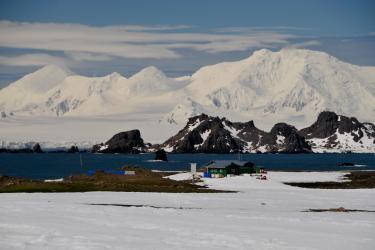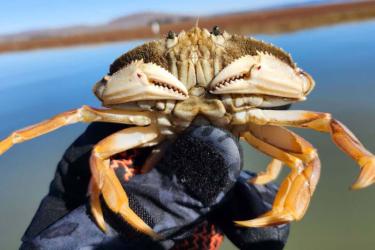NOAA Fisheries said today it is listing Pacific smelt, a little fish with a big history, as threatened under the Endangered Species Act.
Under the ESA, a “threatened” species is in danger of becoming endangered in the foreseeable future. An “endangered” species is one in danger of extinction in all or part of its range.
Pacific smelt, known officially as eulachon, are small ocean-going fish that historically ranged from northern California to the Bering Sea in Alaska. They return to rivers to spawn in late winter and early spring. This little fish is so high in body fat during spawning that it can be dried, strung on a wick and burned, lending another name to its list of aliases—candlefish. There is a small and widely dispersed commercial and recreational fishery for pacific smelt.
A team of biologists from NOAA’s Fisheries Service and two other federal agencies concluded last year that there are at least two Pacific smelt distinct population segments on the West Coast. The one listed today extends from the Mad River in northern California north into British Columbia. These population segments are different from the endangered delta smelt, a freshwater species found in California's Sacramento River delta.
Smelt have historically played an important role in the culture of Northwest native tribes, representing a seasonally important food source and a valuable trade item. Columbia River smelt were first described by Meriwether Lewis in 1806 during the Corps of Discovery; he lauded the fatty fish for their excellent taste.
The Cowlitz Indian tribe in Washington State petitioned NOAA’s Fisheries Service in 2007 to list the fish populations in Washington, Oregon, and California. The tribe’s petition described severe declines in smelt runs along the entire Pacific Coast, with possible local extinctions in California and Oregon.
NOAA’s own scientific review found that this smelt stock is indeed declining throughout its range, and further declines are expected as climate change affects the availability of its prey. Climate change is also expected to change the timing and volume of spring flows in Northwest rivers. Those flows are critical to successful Pacific smelt spawning and these changes could have a negative effect on spawning success. The agency’s review also concluded that Pacific smelt are vulnerable to being caught in shrimp fisheries in the United States and Canada because the areas occupied by shrimp and smelt often overlap.
The agency said other threats to the fish include water flows in the Klamath and Columbia River basins and bird, seal and sea lion predation, especially in Canadian streams and rivers. Recreational fishers catch smelt in dip nets, and typically fry and eat them whole. These fish are also the bait of choice for sturgeon fishers and are often caught specifically for that purpose.
Now that Pacific smelt have been listed as threatened, the agency said it would turn its attention to determining what, if any, protective measures—known as 4(d) rules—are needed for smelt. It would also determine the extent of the fish’s critical habitat. In addition to these protections, the ESA requires federal agencies to ensure that activities they authorize, fund or conduct are not likely to jeopardize the continued existence of a listed species.
Prohibitions against harming them would apply only to Pacific smelt in U.S. waters or to U.S. citizens on the high seas, even though the population extends into Canada.
All of the West Coast states individually manage their own small commercial and recreational smelt fisheries and are responsible for writing and enforcing fishing regulations.

